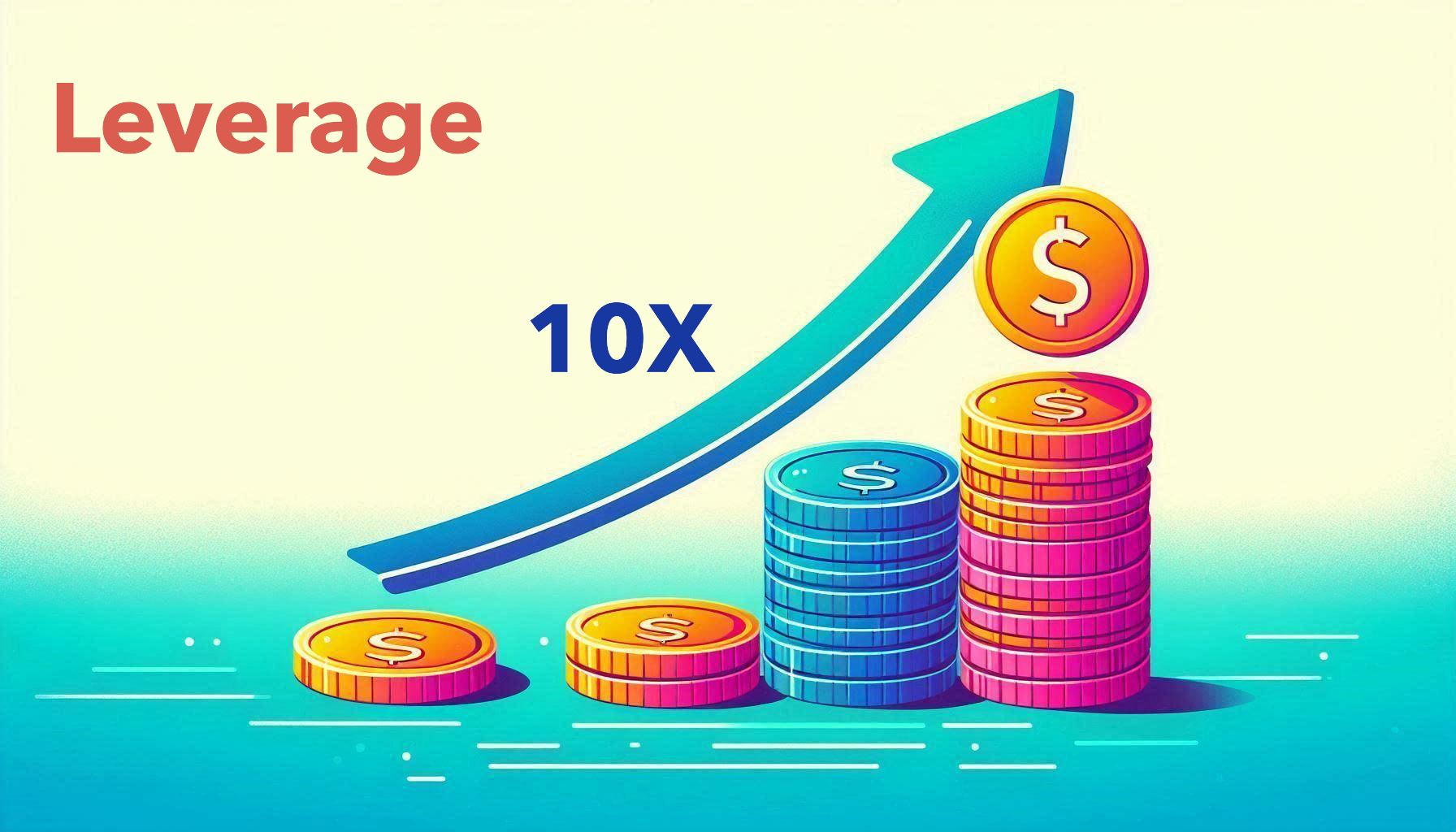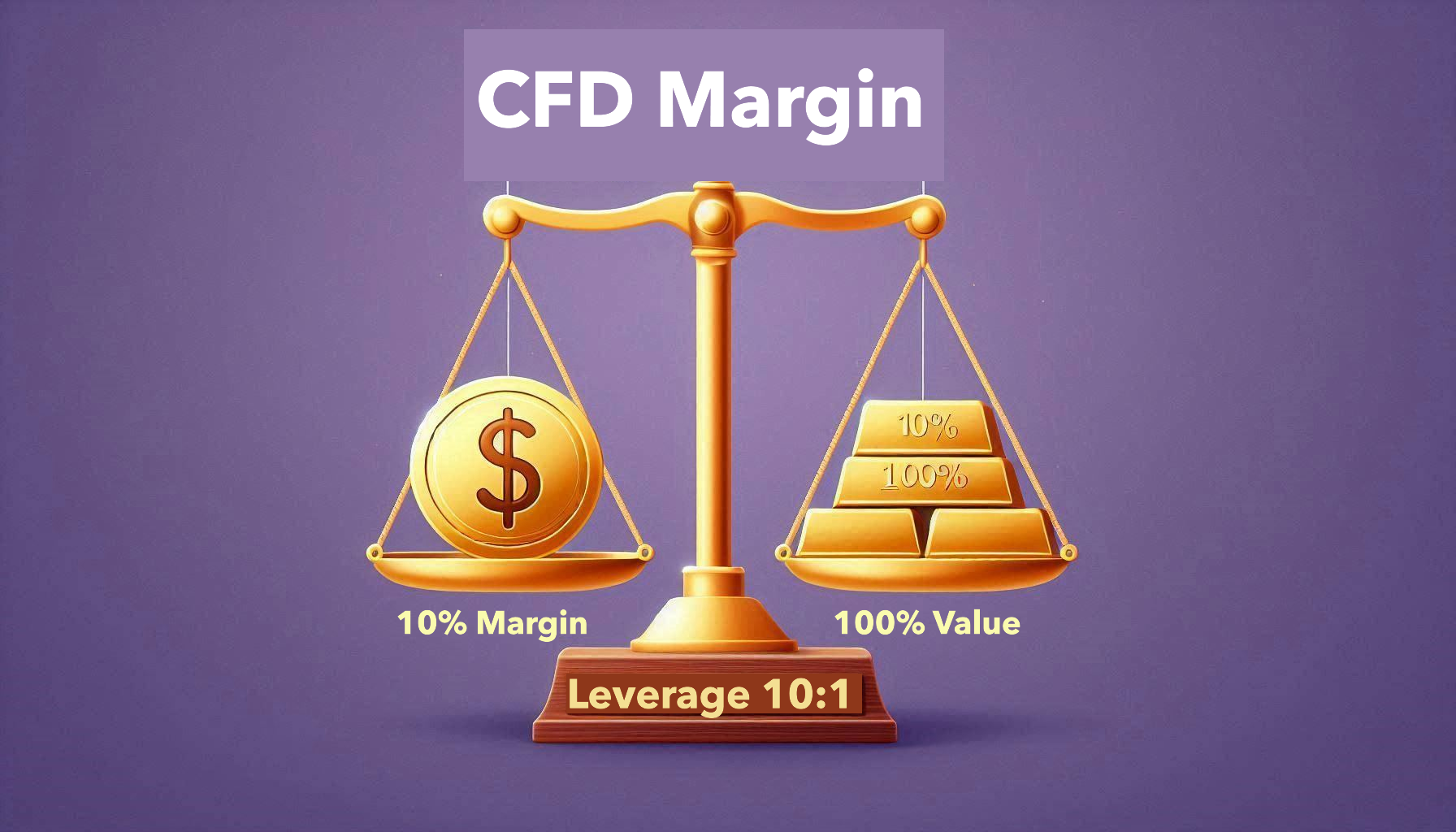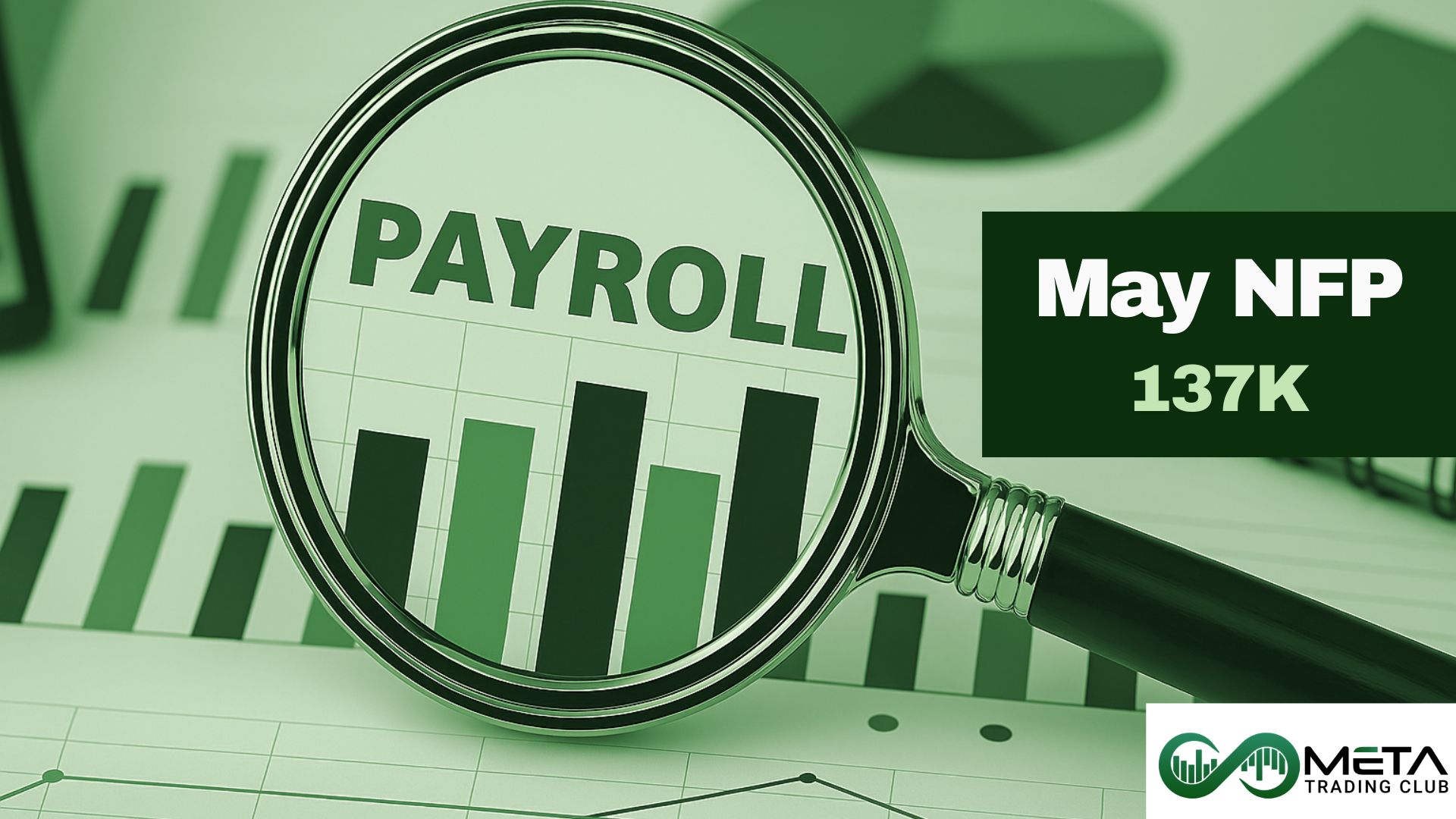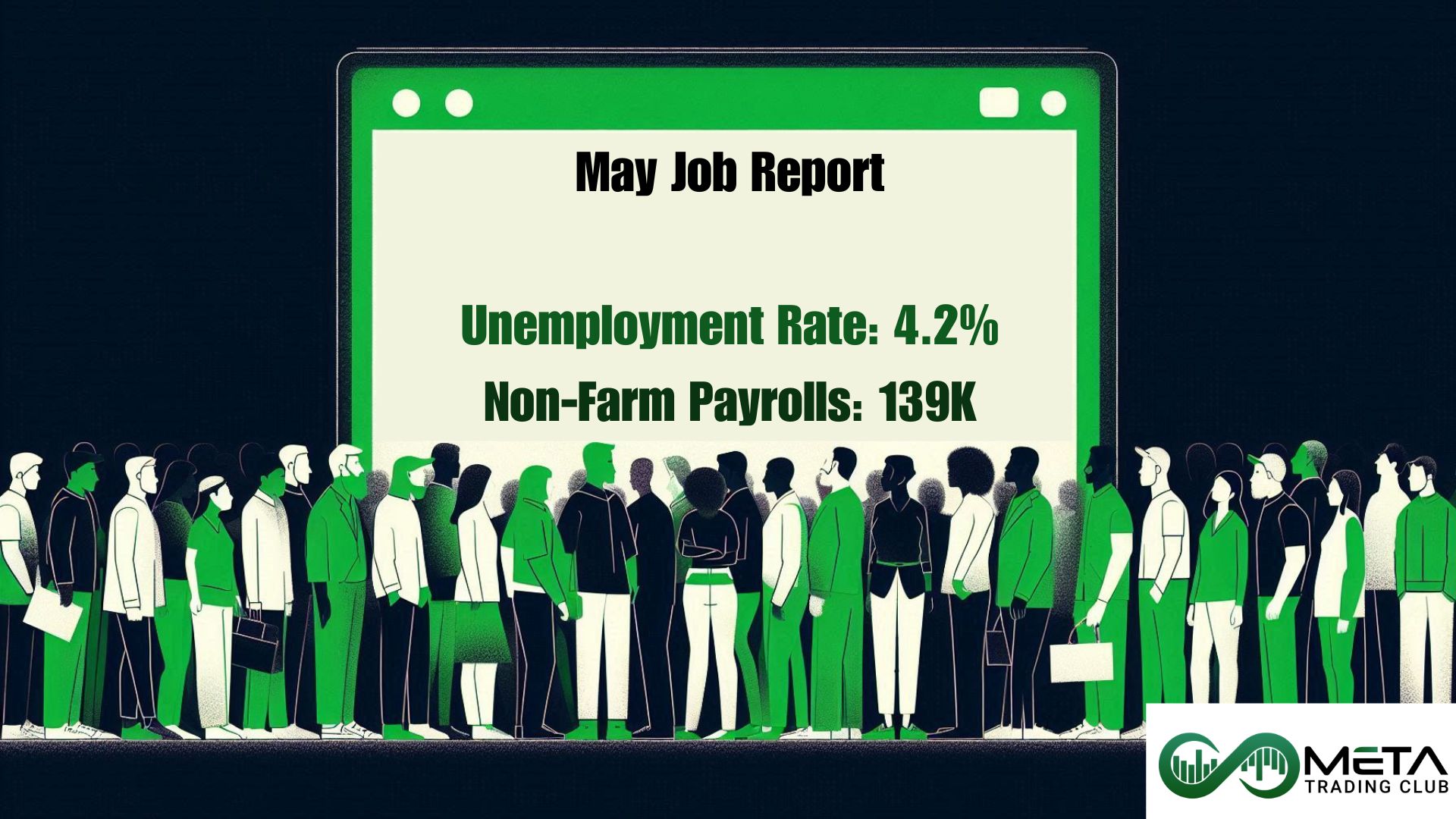Contracts for Difference (CFDs) are like a shortcut to the stock market. They let you trade on prices going up or down without buying the stocks themselves. It’s like having a backstage pass to the financial show. Are you ready to take control of your financial future? Begin your trading journey with CFDs and unlock the door to market opportunities. Take the leap and join the world of smart trading today!
Table of Contents
What Is a Contract for Difference (CFD)?
A Contract for Difference (CFD) is a popular form of derivative trading instrument. CFD allows you to speculate on the price movements of financial assets without actually owning the underlying asset. However, CFDs are agreements between a buyer and a seller to exchange the difference in value of a specific asset.
The primary purpose of CFDs is to enable traders to gain exposure to financial markets with greater flexibility and efficiency. CFD trading allows market participants to profit from both rising and falling markets by going long or short on the underlying asset.
CFD trading enables you to speculate on the rising or falling prices of fast-moving global financial markets (or instruments) such as shares, indices, commodities, currencies, and treasuries.
Also, CFDs provide higher leverage than traditional trading, meaning you can gain a large exposure to a financial market while only tying up a relatively small amount of your capital. However, leverage can also amplify losses, making it important to manage risks carefully. CFDs are a flexible way to trade, but they require a good understanding of the financial markets.
Terminology of CFDs
some common terms associated with CFDs (Contracts for Difference) that are important for beginners to understand:
- Speculation: You predict whether the price of a market will rise or fall.
- Difference: The profit or loss is determined by the difference in price, multiplied by the number of CFD units.
- CFD (Contract for Difference): A financial contract that pays the differences in the settlement price between the open and closing trades.
- Leverage: The use of borrowed capital to increase the potential return of an investment. However, leverage allows traders to gain a larger exposure to the market without committing the full amount of capital.
- Margin: The initial deposit required to open a position, often a percentage of the full value of the position.
- Spread: The difference between the ask and bid prices quoted for a CFD.
- Long position: A trade that profits from an increase in the price of the underlying asset.
- Short position: A trade that profits from a decrease in the price of the underlying asset.
Types of Contract for Difference
CFDs offer a versatile range of underlying assets for traders to choose from. Here are some major types of CFDs.
Stock CFDs
Stock CFDs allow traders to speculate on the price movements of individual stocks without owning the underlying shares. Also, stock CFDs offer traders several advantages, such as the ability to trade without having to pay stamp duty, the ability to trade with leverage, and the ability to go long or short on a stock.
Index CFDs
Index CFDs allow traders to speculate on the price movements of a basket of stocks that make up an index, such as the S&P 500 or the Dow Jones Industrial Average. Furthermore, index CFDs offer traders exposure to the broader market, allowing them to diversify their portfolio and reduce their risk.
Currency CFDs
Currency CFDs allow traders to speculate on the price movements of Forex currency pairs, such as the EUR/USD or GBP/USD. In addition, currency CFDs are popular among forex traders, as they offer the ability to trade a wide range of currency pairs with leverage and low transaction costs.
Commodity CFDs
Commodity CFDs allow traders to speculate on the price movements of commodities such as gold, oil, and wheat. Moreover, commodity CFDs offer traders exposure to the commodity markets, without having to physically own the underlying asset. Also, commodity CFDs can be traded with leverage, allowing traders to amplify their potential profits.
Cryptocurrency CFDs
Cryptocurrency CFDs allow traders to speculate on the price movements of cryptocurrencies such as Bitcoin, Ethereum, and Litecoin. Also, cryptocurrency CFDs offer traders the ability to trade the volatile crypto markets with leverage, without having to own the underlying coins or cryptocurrency pairs.
Each CFD category comes with its unique features and trading conditions. Thus, you should understand the underlying asset’s fundamentals and technical analysis before engaging in CFD trading to mitigate potential risks. Boost your trading skills with our 4-week incubator program. Get expert-led live education whether you’re a beginner or experienced trader.
Leverage in Trading CFDs
Leverage in trading, including CFDs, refers to the use of borrowed capital to increase the potential return of an investment. However, leverage allows traders to gain a larger exposure to the market without committing the full amount of capital. Instead, you only need to deposit a small percentage of the total value of your trade. This deposit is known as the margin.
For example, if a platform offers a leverage of 10:1, you can trade $10,000 worth of CFDs with just $1,000 in your account. The formula for leverage is:
Leverage = Margin Requirement / Total Value of Investment
So, in this case: Leverage = $1,000 / $10,000 = 10
This means with a 10:1 leverage, a 1% increase in the market price can result in a 10% increase in your profits. However, it’s important to remember that leverage works both ways. While it can magnify profits, it can also magnify losses. If the market moves against you, you could lose more than your initial investment.
It’s like using a lever to lift a heavy object (the lever allows you to lift much more than your own strength would permit) but if not handled carefully, it can lead to a loss of control. That’s why risk management and understanding the market are crucial when trading with leverage.
Margins
Brokers provide negative balance protection for CFD accounts. In order to keep positions open, a trader must meet the maintenance margin requirement (the maintenance margin must be covered by the account’s overall equity).
The value maintained in a margin account acts as collateral for credit. If the account equity falls below the maintenance margin, your broker notifies you via a ‘margin call’. This is where you will either need to top up your balance or close some of your positions in order to reduce your exposure. If you do not act and the close out level is reached, a gradual close-out procedure will take place on your positions.
With negative balance protection, you can be sure that your account balance will be corrected if it drops below zero. If a market suddenly moves against you, your broker can close the affected position to protect you.
Contract Length of CFDs
The term Contract Length in the context of CFDs (Contracts for Difference) typically refers to the duration of the contract. This is the time between when the CFD position is opened and when it is closed. The length of a CFD contract can vary depending on the broker and the specific financial instrument being traded. Common contract lengths include: daily, weekly, monthly, quarterly and yearly.
Most CFD trades have no fixed expiry date, meaning that the CFD contract length is unlimited. A trade is closed only when placed in the opposite direction. For example, you can close a buy trade on 100 CFDs by selling the CFDs.
However, if you want to keep your daily CFD trade open after the cut-off time (usually 10pm UK time, but it can vary for international markets), you will be charged an overnight funding fee. In forex, index and commodities trading, brokers charge overnight fee on the full trade size, while on stocks, cryptocurrencies and ETFs charge is only applied on the borrowed part.
Countries That Allow CFD Trading
CFD trading is banned in the United States, Brazil and Hong Kong. However, they are allowed in listed, over the counter (OTC) markets in many major trading countries, including the United Kingdom, Germany, Switzerland, Singapore, Spain, France, South Africa, Canada, New Zealand, Hong Kong, Sweden, Norway, Italy, Thailand, Belgium, Denmark, and the Netherlands.
Advantages of Contracts for Differences
- Flexibility: CFD trading offers a high degree of flexibility, allowing traders to go long or short on the underlying asset, depending on their market view. This means that traders can potentially profit from both rising and falling markets.
- Access to a wide range of trading products: CFD trading provides access to a broad range of financial instruments, including stocks, indices, commodities, currencies, and even cryptocurrencies. This extensive access allows traders to explore various markets without having to own the underlying assets.
- Lower transaction costs: CFD trading often has lower transaction costs compared to stock trading. This is because CFDs do not involve the physical transfer of assets, and therefore, many associated costs, like stamp duty, are eliminated.
- Leverage trading: CFDs provide higher leverage than traditional trading. Lower margin conditions mean less capital input for the trader and beefier possible returns.
- Global market access from one platform: Many CFD brokers offer products in all the world’s major markets, allowing around-the-clock access. As a result, traders can trade CFDs on a wide range of worldwide markets.
- No shorting rules or borrowing stock: Certain markets have regulations that prohibit shorting and mandate the trader to borrow the financial tool before selling it short, on top of having different margin requirements for short and long positions. However, CFD instruments can be shorted at any time without borrowing costs since the trader doesn’t own the underlying asset.
- No day trading requirements: Certain markets demand minimum amounts of capital to day trade or limit the number of day trades allowed to be made within certain accounts. These restrictions do not apply to the CFD market, and as such all account holders can day trade if they wish to do so.
Disadvantages of Contracts for Difference
- Spread: Paying the spread on entries and exits takes away the possibility to profit from small moves. The spread will also reduce winning trades by a small amount compared to the underlying security and increase losses by a small amount. So, though standard markets expose the trader to various fees, regulations, commissions, and higher capital requirements, CFDs cut traders profits via spread costs.
- Weak industry regulation: The CFD industry is not highly regulated in all countries. A CFD broker’s credibility is not based on government standing or liquidity but rather reputation, longevity, and financial position. For that reason, it is paramount to investigate a broker’s background before opening an account with them.
- Leverage risks: CFD trading is fast-paced and demands close monitoring. You need to maintain liquidity risks and margins, and if you cannot cover reductions in values, your provider may close your position. You’ll have to cover the loss no matter what subsequently happens to the underlying asset.
Final Words
In conclusion, CFDs offer a flexible and dynamic way to trade the financial markets. They allow traders to speculate on price movements without owning the underlying assets and provide access to a wide range of markets with relatively low capital investment due to leverage. While the potential for high returns is significant, it’s crucial for traders to remember that with great power comes great responsibility. The same leverage that can amplify profits can also magnify losses.
Therefore, a prudent approach, thorough market research, and sound risk management strategies are essential for anyone looking to navigate the world of CFD trading successfully. Do you want to gain practical knowledge to boost your CFD trading performance? Participate in a 3-day MTC In-person Trading Incubator. You do not need prerequisites for this comprehensive course; everything will be covered from A to Z.
FAQs
- What is a CFD in trading?
A CFD, or Contract for Difference, in trading is a financial instrument that allows traders to speculate on the price movement of assets like stocks, commodities, currencies, and indices without actually owning them. - Is CFD gambling?
CFD trading is often compared to gambling due to its speculative nature and the use of leverage, which can amplify both gains and losses. However, CFD trading requires a degree of skill, knowledge, and experience to make informed decisions based on market analysis. Also, traders can employ risk management strategies to mitigate potential losses, which is not typically an option in gambling. - Is CFD the same as forex?
While both involve speculation on price movements and can be done on similar platforms, CFDs offer a broader range of tradable assets beyond just currency pairs but Forex trading is limited to currency pairs. - Why are CFD banned in the US?
The Commodity Futures Trading Commission (CFTC) and the Securities and Exchange Commission (SEC) have prohibited U.S. residents and citizens from opening CFD accounts on both domestic and foreign platforms. CFD trading is banned in the United States primarily due to concerns over the leveraged nature of these financial instruments and the potential for large losses. - Are CFDs legal in Europe?
Yes, CFD trading is legal in Europe. It is regulated by the national competent authorities in each EU member state, and the European Securities and Markets Authority (ESMA) plays a coordinating role in the regulatory process.















